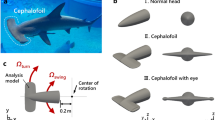Abstract
The effect of high hydrostatic pressure on the ultrastructures of gill tissues of a variety of marine bivalves has been investigated employing a new technique of pressure fixation. The degree of disintegration of some cell organelles is augmented by increasing pressure. Pressure effects on the plasmalemma of the cell surface, with its microvilli and the shaft of the cilia, as well as on the microtubuli of the cilia themselves, can be made visible. At low pressure (400 atm), the plasmalemma forms small vesicular elements. At high pressure (700 atm), large oedematous expansions can be observed. The microtubuli of the cilia disintegrate at 700 atm, so that the cross-section only reveals homogeneous electron-dense material. The results indicate that some cell organelles are sensitive to pressure, and underline the importance of hydrostatie pressure as a physiological-ecological factor in the marine environment.
Zusammenfassung
-
1.
Mit einer neuen Druckfixierungstechnik werden Kiemenepithelien der Muscheln Modiolus modiolus, Cyprina islandica und Mytilus edulis aus Kattegatt und Ostsee für elektronenmikroskopische Untersuchungen präpariert. Der Einfluß hydrostatischer Drükke wird an Hand ultrastruktureller Veränderungen dieser Epithelien analysiert.
-
2.
Nach Einwirkung hoher Drücke bildet das Plasmalemma der Zelloberfläche ödematöse Auftreibungen, das der Mikrovilli und des Zilienschaftes kleinere Vesikel. Die Intensität dieser strukturellen Veränderungen hängt von der Druckhöhe ab.
-
3.
Die Fibrillen der Zilien desintegrieren mit steigender Druckhöhe zunehmend zu einem elektronendichten Material.
-
4.
Mögliche Mechanismen der Strukturveränderungen werden diskutiert.
Similar content being viewed by others
Zitierte literatur
Benthaus, J.: Über den Einfluß hoher Drucke auf Gewebekulturen. Pflügers Arch. ges. Physiol. 239, 107–119 (1938).
Fawcett, D. W.: The cell — an atlas of fine structure, 448 pp. Philadelphia & London: W. B. Saunders Co. 1965.
Flügel, H.: Pressure-Animals. In: Marine ecology, Vol. I. Part 3. Chapter 8.3 pp 1407–1437. Ed. by O. Kinne. London: Wiley Interscience 1972
Gibbons, I. R.: The relationship between the fine structure and direction of beat in gill cilia of a lamellibranch mollusc. J. biophys. biochem. Cytol. 11, 179–205 (1961).
Haas, F.: Lamellibranchia. Tierwelt N.-u. Ostsee 9, 1–49 (1926).
Johnson, F. H., H. Eyring and M. J. Polissar: The kinetic basis of molecular biology, Chapter 9. pp 286–368, New York: Wiley & Sons 1954.
Kitching, J. A.: Effects of high hydrostatic pressures on the activity of flagellates and ciliates. J. exp. Biol. 34, 494–510 (1957).
Komnick, H. und K. E. Wohlfahrt-Bottermann: Morphologie des Cytoplasmas. Fortschr. Zool. 17, 1–154 (1966).
Landau, J. V.: High hydrostatic pressure effects on Amoeba proteus. Changes in shape, volume and surface area. J. Cell Biol. 24, 332–335 (1965).
— and L. Thibodeau: The micromorphology of Amoeba proteus during pressure-induced changes in the sol-gel cycle. Expl Cell Res. 27, 591–594 (1962).
—, A. M. Zimmerman and D. A. Marsland: Temperaturepressure experiments on Amoeba proteus. Plasmagel structure in relation to form and movement. J. cell. comp. Physiol. 44, 211–232 (1954).
Luft, J.: Improvements in epoxy resin embedding methods. J. biophys. biochem. Cytol. 9, 409–414 (1961).
Marsland, D. A.: Cells at high pressure. Scient. Am. 199, 36–43 (1958).
—: Pressure-temperature studies on the mechanism of celldivision. In: High pressure effects on cellular processes, pp 260–306, Ed. by A. M. Zimmerman. New York: Academic Press 1970.
Naroska, V.: Vergleichende Untersuchungen über den Einfluß des hydrostatischen Druckes auf Überlebensfähigkeit und Stoffwechselintensität mariner Evertebraten und Teleosteer. Kieler Meeresforsch. 24, 95–123 (1968).
Overton, J.: Intercellular connections in the outgrowing stolon of Cordylophora. J. Cell Biol. 17, 661–669 (1963).
Ponat, A.: Untersuchungen zur zellulären Druckresistenz verschiedener Evertebraten der Nord- und Ostsee. Kieler Meeresforsch. 23, 21–47 (1967).
Reynolds, E. S.: The use of lead citrate at high pH as an electron opaque stain in electron microscopy. J. Cell Biol. 17, 208–213 (1963).
Sabatini, D. D., K. Bensch and R. J. Barnett: Cytochemistry and electron microscopy. The preservation of cellular ultrastructure and enzymatic activity by aldehyde fixation. J. Cell Biol. 17, 19–58 (1963).
Sitte, P. (Hrsg.): Probleme der biologischen Reduplikation, 412 pp. Berlin-Heidelberg-New York: Springer Verlag 1966.
Tilney, L. G. and R. R. Cardell: Factors controlling the reassembly on the microvillus border of the small intestine of the salamander. J. Cell Biol. 47, 408–422 (1970).
—, Y. Hiramoto and D. A. Marsland: Studies on the microtubules on Heliozoa. III. A pressure analysis of the role of these structures in the formation and maintenance of the axopodia of Actinosphaerium nucleofilum. J. Cell Biol. 29, 77–95 (1966).
Voigt, W. H.: Zur funktionellen Morphologie der Fibroin- und Sericinsekretion der Seidendrüse von Bombyx mori. Dissertation mathematisch-naturwissenschaftlichen Fakultät Universität Bonn (1964).
Watson, M. L.: Staining of tissue sections for electron microscopy with heavy metals. J. biophys. biochem. Cytol. 4, 475–478 (1958).
Wood, R. L.: Intercellular attachment on the epithelium of Hydra as revealed by electron microscopy. J. biophys. biochem. Cytol. 6, 343–351 (1959).
Yamada, E.: The fine structure of the gall bladder epithelium of the mouse. J. biophys. biochem. Cytol. 1, 445–458 (1955).
Zimmerman, A. M. (Ed.): High pressure effects on cellular processes, 324 pp. New York and London: Academic Press 1970.
Author information
Authors and Affiliations
Additional information
Communicated by O. Kinne, Hamburg
Diese Arbeit enthält Teile der Diplomarbeit des Verfassers.
Rights and permissions
About this article
Cite this article
Fritsch, H.A.R. Über den Einfluß des hydrostatischen druckes auf die ultrastrukturen von zellen und geweben. I. Untersuchungen am Kiemenepithel marine Muscheln. Mar. Biol. 20, 71–77 (1973). https://doi.org/10.1007/BF00387677
Accepted:
Issue Date:
DOI: https://doi.org/10.1007/BF00387677




